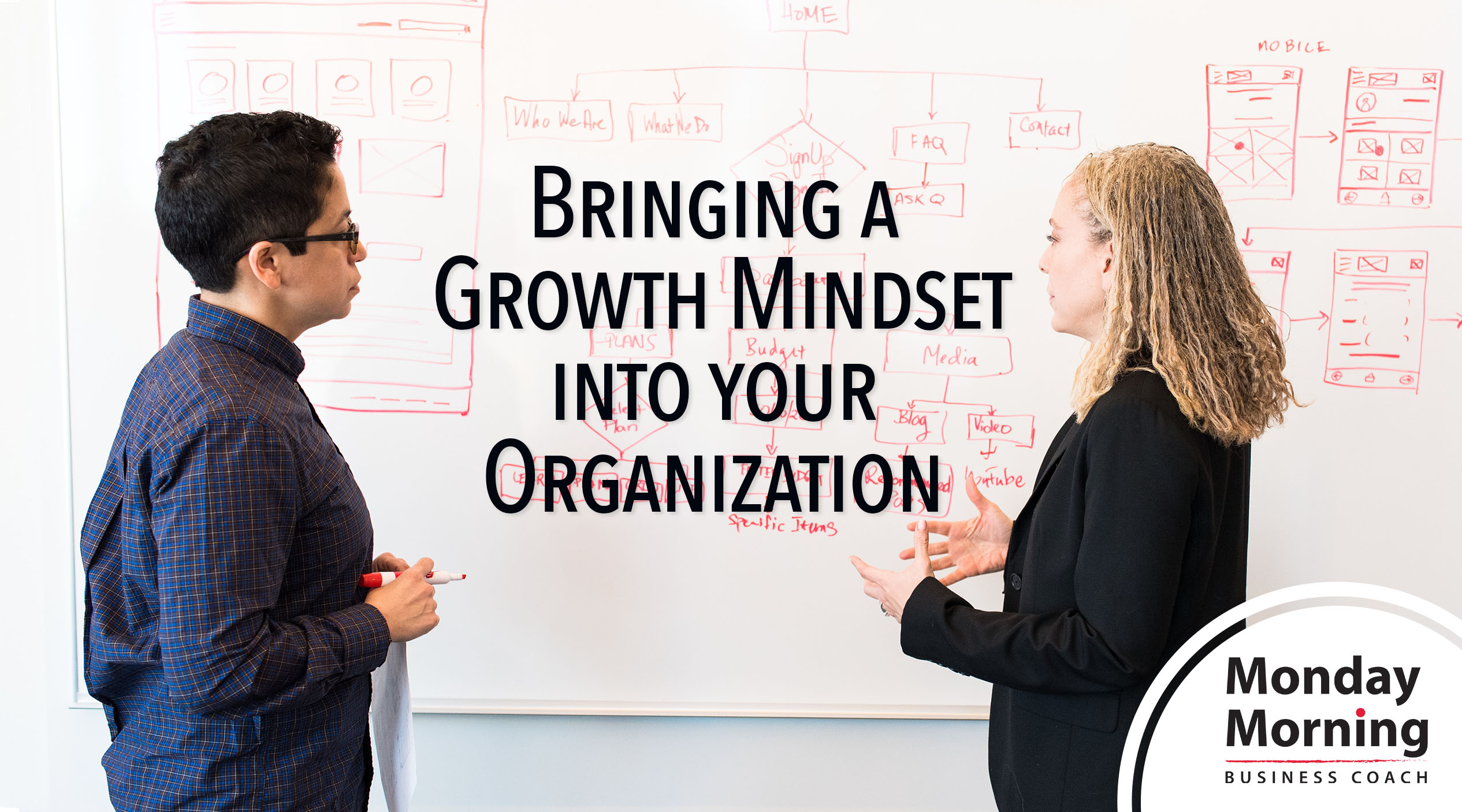Over the past couple of weeks, we’ve been talking about a growth mindset, starting with the difference between a growth mindset and a fixed mindset.
As a reminder, here’s the difference:
- Growth Mindset: believing that with time and experience we can all learn, grow, and become smarter
- Fixed Mindset: believing that we are who we are
The exciting and sometimes difficult shift to living a growth mindset involves working toward seeing challenges as opportunities to learn rather than as threats.
People who see challenges as learning opportunities are more resilient, agile, and innovative – qualities that are important to us personally and to our organizations.
Three steps to weaving a growth mindset into an organizational culture:
- Define the ways you can name and claim a growth mindset day-to-day in your work, teams, and organization. While there are a number of ways to talk about this mindset, the most successful organizations talk about it regularly and in a consistent language:
- Some organizations talk about becoming a learning organization or creating continuous improvement.
- We teach leaders about creating a culture of leadership and engagement where every single member of the organization owns their leadership, regardless of their role or title.
- In business, people may be respected for holding a growth mindset, but they also need to be able to take action from a growth mindset in a way that furthers the mission and vision.
- Define the core behaviors that you’d expect to see if people are living a growth mindset. While behaviors are specific to an organization there are some that all organizations committed to a growth mindset share:
- There is an expectation that all members of the organization seek feedback and gratefully accept it – from the CEO, to the middle managers, and to the line staff.
- There is recognition and respect for exploration and reasonable risk/failures are celebrated when done in an effort to learn.
- “Yet” has become a part of the approach to solving problems, as in, “We aren’t there yet, but we’re getting closer.”
- People evaluate their successes and challenges and explore ways to become more effective rather than only discussing these things at an annual review.
- Track quantitative and qualitative indicators of increases in growth mindset. Provide recognition when people are showing a growth mindset and provide coaching support when they’re falling into a fixed mindset. Here are some examples of what organizations are doing:
- Use employee satisfaction and/or engagement surveys to assess growth mindset.
- Track the willingness of employees to share their unique perspectives and to take risks as they learn and grow.
- Build growth mindset stories into newsletters, emails from leaders, and presentations at organizational meetings. Success stories that come from having a growth mindset help people start to understand how to translate it into successful implementation.
- Track how much collaboration (genuine, struggle-through-different-perspectives-together collaboration) is happening at various levels throughout the organization.
Remember, people will discard this as a flavor of the month exercise; especially if leaders themselves don’t really have a growth mindset. Leaders need to be willing to embrace a growth mindset and some of the more challenging aspects of it – like seeking feedback gratefully. Remember, what we say is not nearly as important as what we do!
Spend some time this week considering how you can bring a growth mindset to your own life and to your work.
We would love to hear how you’re weaving a growth mindset into your organizational culture!
If you’d like 1:1 support in
putting a growth mindset into practice,
contact us today about our Executive Coaching.


